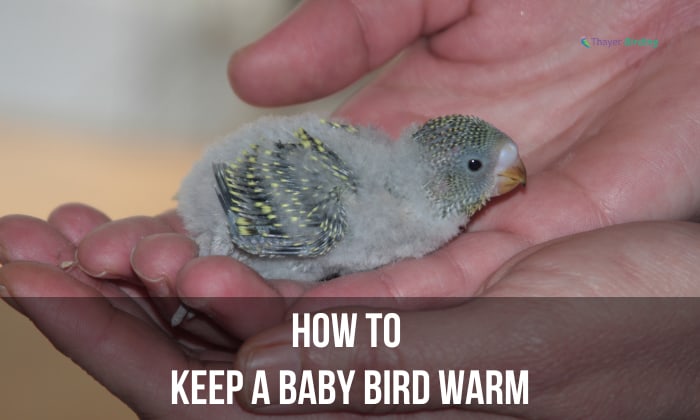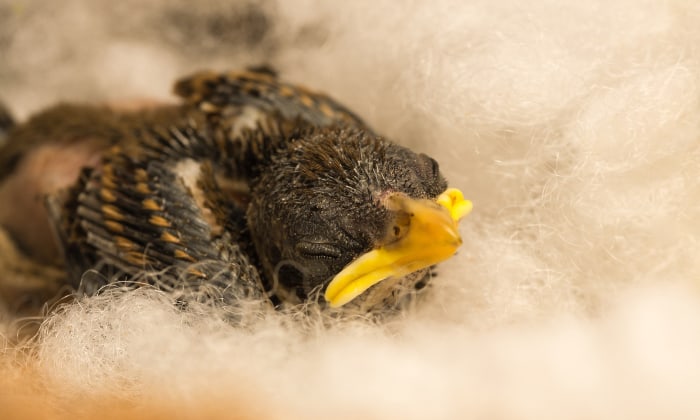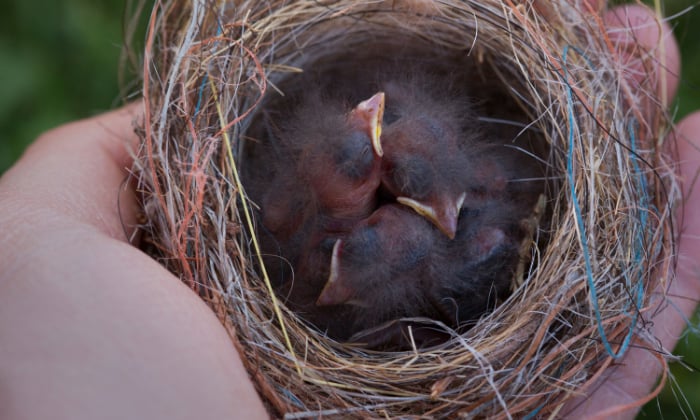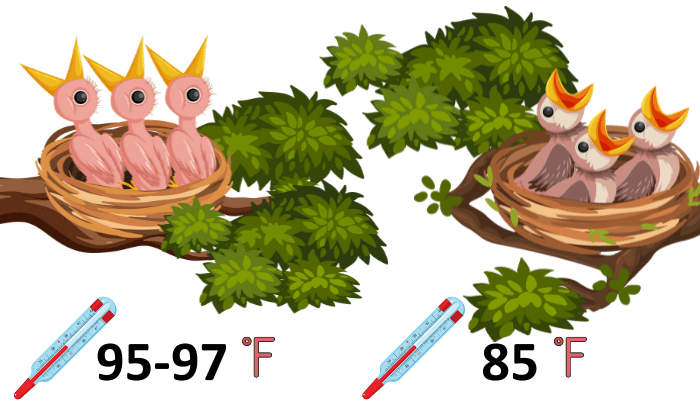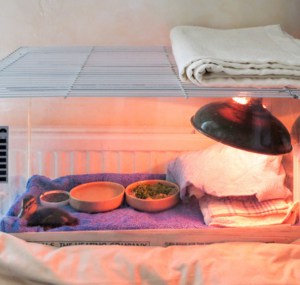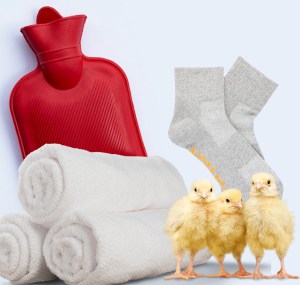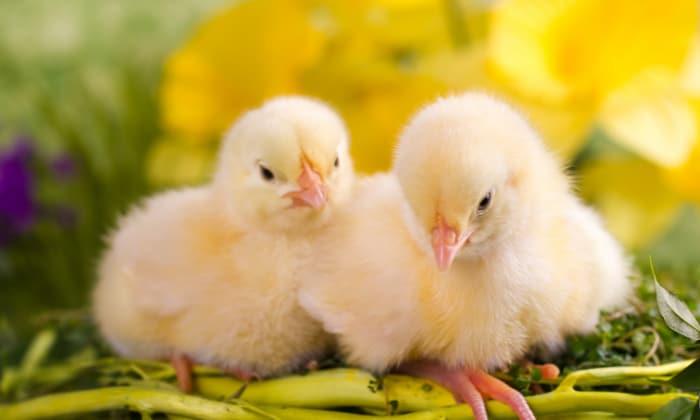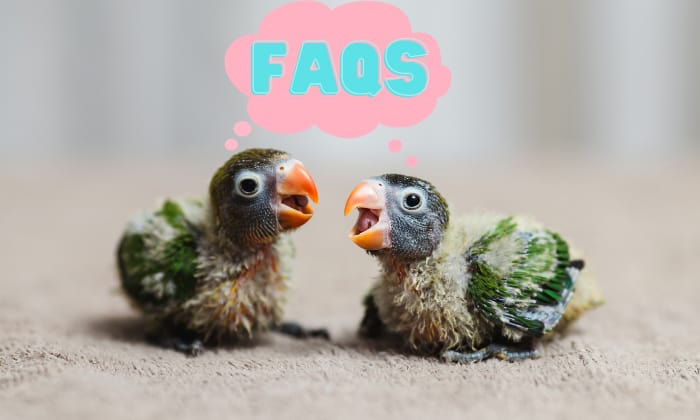Imagine looking outside at your yard on a beautiful spring day and noticing something odd-looking on the grass. It’s a newborn baby wren bird!
After judging it is in dire need of help, you take the baby bird in to attempt to keep a baby bird alive by getting it warmed up. But how to keep a baby bird warm?
To start, place something warm at the bottom of a makeshift nest, such as a bottle with warm water, a heating pad placed on low, or a sock filled with warmed uncooked rice. Layer some towels on top, then tuck in the baby bird.
Table of Contents
Ways to Keep a Baby Bird Warm
Before you decide to help baby birds, make sure that they’re truly abandoned. If they’re not injured, move them to a safer place, preferably their nest. Observe whether their parents come back in half an hour. If not, it’s up to you to take care of the birds.
However, if the baby bird is a nestling, meaning that it has no feathers whatsoever, it needs your help right away.
Whenever you handle the baby bird, make sure to wear gloves. This will protect you from any possible bacteria it may be carrying, and vice versa.
Build a Nest
The first step to warming up your baby bird is to build a tiny temporary home.
Any small basket or container will do. Line it with tissue paper, towels, undyed cotton, or wool to make the baby bird safer and more comfortable.
You should never place chemically treated or non-degradable material into the makeshift nest. Long strings like yarn should also be avoided, as baby birds can easily choke on them. If you must use yarn, be sure to cut it into tiny pieces that can’t suffocate the chick.
Keep Newborn Birds Warm
When trying to take care of a baby bird without feathers, food isn’t the top priority: warmth is!
Monitoring the baby bird temperature is essential to ensure it isn’t too cold or hot. A nestling (featherless baby bird) should be in a box between 95-97 degrees Fahrenheit, while a hatching (feathered baby bird) will be comfortable at about 85 degrees.
Here are several ways to keep a baby bird warm:
1. Baby bird brooder
If you have one available, the best way to care for a newborn bird is to place it in a brooder. These boxes are equipped with a heat lamp for baby birds and are temperature-controlled, allowing you to optimize your baby bird’s environment.
First, adjust the temperature settings from 85-100℉, depending on whether the bird is a nestling or hatching. Use a thermometer to monitor the temperature and adjust it as needed. Then place the bird inside.
2. Use a heating pad for baby birds
Make sure this is only set to low and wrapped in a towel. Do not place your baby bird directly on top of the pad! Also, make sure the bird can move elsewhere if the heating pad becomes unbearable for it.
If you are without a heating pad and without a heat lamp, don’t worry. There are other everyday household objects you can use, including:
- Fill a warm sock with uncooked rice and microwave for thirty seconds. Once warm, wrap it in a soft towel. Feel it with your hand to see if the sock is too hot. If not, you can safely place it next to your baby bird.
Remember to replace the sock every 2 hours.
- Place a water bottle filled with warm water (around 100-104 °F), wrap it in a towel, and place it next to the bird. You can do the same thing by filling a rubber glove with warm water, but be careful since it may rip and burn the chick!
Again, replace the water bottle once it gets cold so the bird has a constant source of warmth.
- You can share your body warmth if you have nothing else available. First, wash your hands with soap and water. Then, use a soft, clean cloth to pick the bird up. Cup it in your hands or hold it against your chest to warm it up. Pay attention to the bird’s behavior. For instance, after a while, the bird may try to move away from you—this is a sign that it’s feeling too warm.
Other Tips to Save a Baby Bird’s Life
Warmth isn’t the only thing a baby bird needs, especially if you keep it overnight. Here are a few more things to remember.
- Keep it quiet: Loud noises can startle birds, so keep it away from TV, barking dogs, the radio, or anything else loud.
- Baby birds like the dark. Baby birds will feel calm in a darker rather than brighter place, especially at night. Place your bird in a closet (with the door slightly ajar) if needed.
- Never give your bird milk or yogurt. Birds are lactose intolerant!
- Never drip water into its beak. Ideally, you leave the feeding and drinking to the experts. However, if you must hydrate the bird, never drip water into its mouth–this can cause it to drown.
Instead, you can dip small pieces of bread in water and feed that to the bird. Better yet, soak a Q-tip in water and allow it to suck that, or brush the fluid on its beak and let it “lick” it on its own.
Water must always be at room temperature.
- Do your research before feeding it. Again, if possible, leave this to the experts. But if you must, the food should always be warm, around 102°-106 °F, although this may vary from species to species.
- If you’re feeling out of your depth, it’s best to call a wildlife rehabilitator near you for assistance. They can best decide how to save a baby bird from dying.
Frequently Asked Questions
How do I know my baby bird is too warm?
Baby birds need a heat lamp–but too much heat can kill it too!
If you see your baby bird holding its wings out from its body and panting, you will know it’s too warm. Make the necessary adjustments to its nest as soon as possible.
Can I keep the baby bird?
The Migratory Bird Treaty Act (MBTA) makes keeping certain birds as pets illegal. In 2020, they released an updated list of birds covered by the MBTA.
However, even if you are legally allowed to keep your bird, remember that it’s difficult for baby birds survive without their mother. Ultimately, it will have a higher chance of survival if you return it home or leave it with a wildlife rehabilitator.
Conclusion
If you suddenly need to care for a baby bird, the first rule is don’t panic! You don’t need to convert your whole house into a clinic, order expensive equipment, or do anything too drastic.
There are many simple ways on how to keep a baby bird warm, and many clinics, pet shops, and wildlife experts can help you deal with the situation.
Though giving it a warm sock with rice and a small nest may not seem much, these may be all you need to do to save the little one’s life.

George and I became friends after a birdwatching trip with our new group. And we have been enjoying every adventure together. When he told me the idea of establishing a site that shares our experiences and fun, I immediately agreed. After trials and errors, here we have Thayerbirding.


